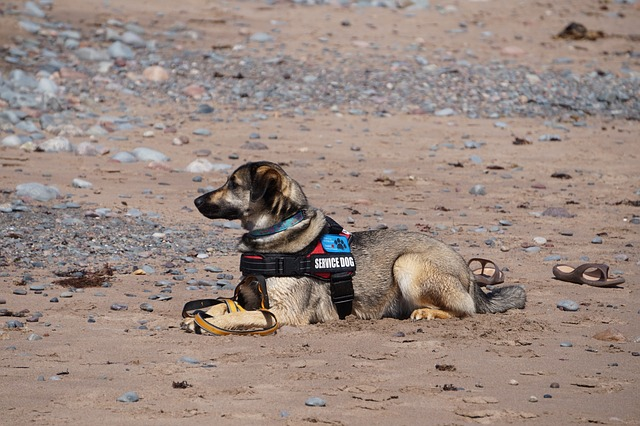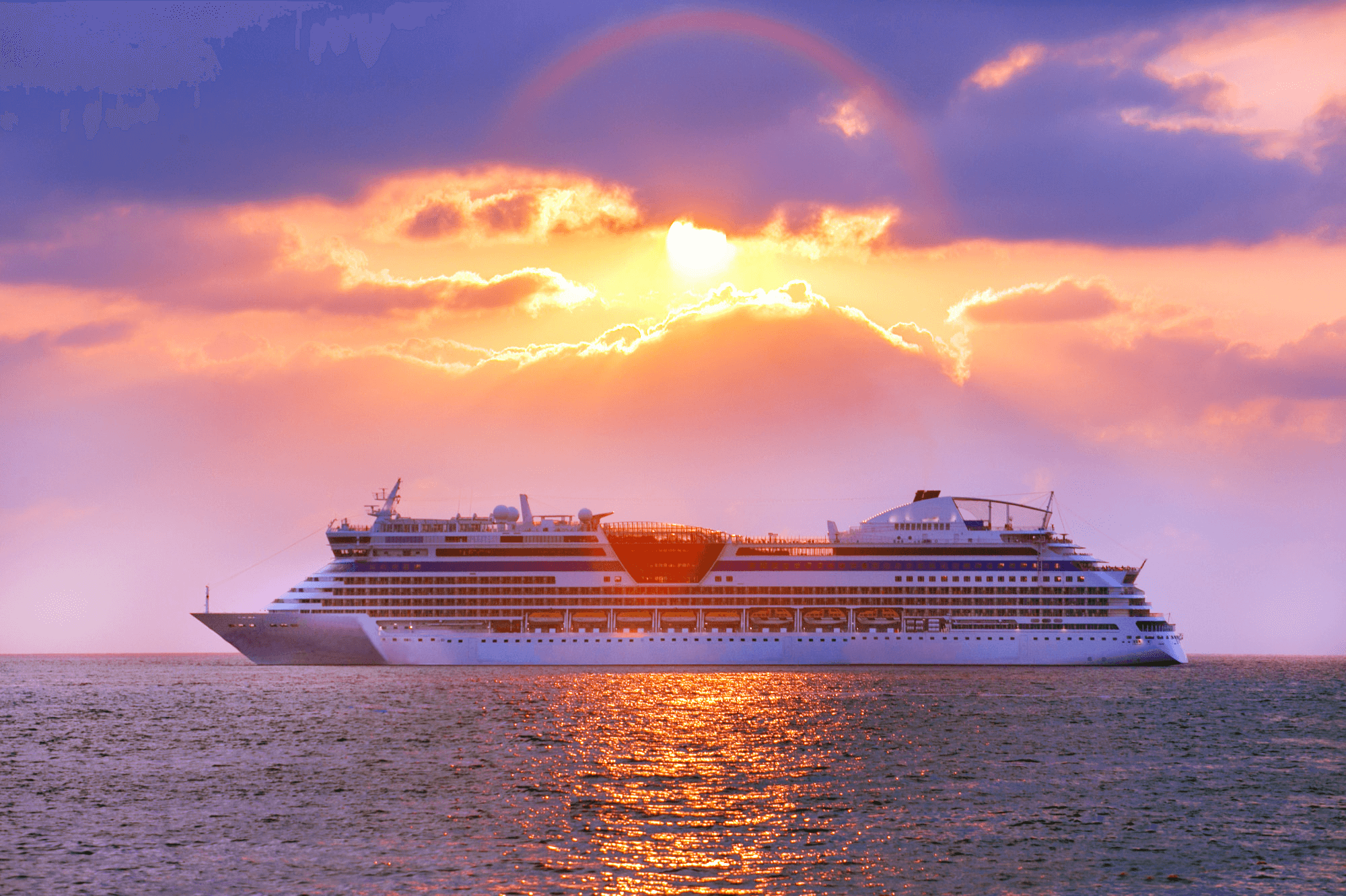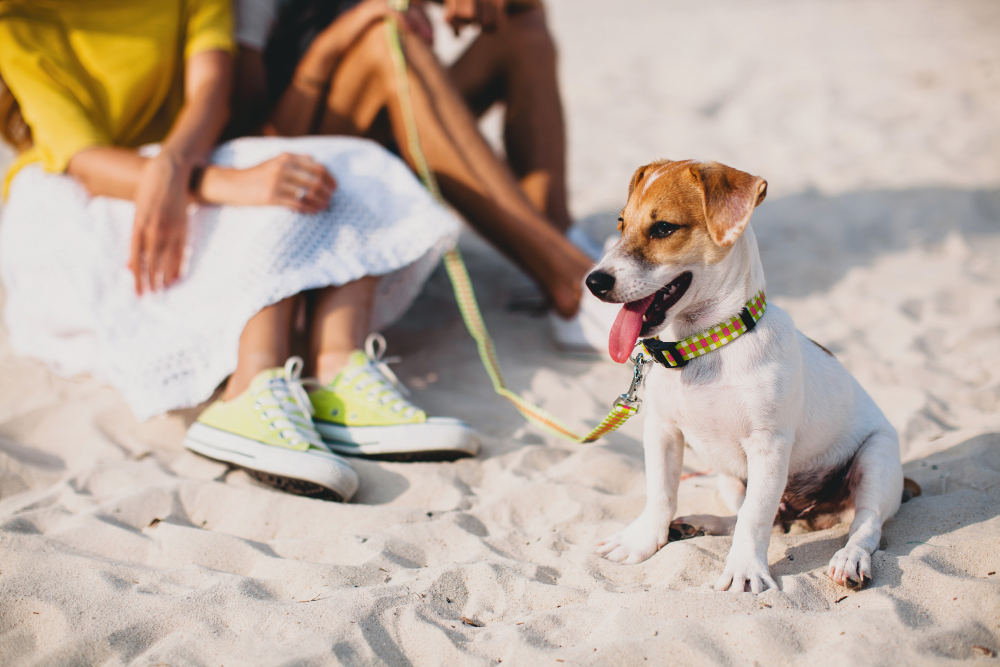Hey there, fellow cruise enthusiasts and dog lovers! We’re all familiar with the call of the sea—the siren song that promises adventure and relaxation.
But as the trend of pet owners traveling with their dogs continues to grow, there’s one question on every dog lover’s mind: Can dogs go on cruises? It’s high time we delve into this doggone delightful topic. So, leash up your four-legged friends, and let’s embark on a voyage to find you a pet-friendly cruise!
Can Dogs Go on Cruises?
Yes, dogs can go on cruises! In fact, many pet-friendly cruise lines are making it easier than ever for pet owners to bring their furry friends along for the ride. However, the rules and policies for bringing dogs on board cruise ships vary among cruise lines, and not all cruises are pet-friendly.
So, if you’re a dog lover looking to sail the high seas with your canine companion, it’s important to do some research and find out which cruise lines are accommodating of our furry friends.
Cruise Lines’ Policies on Pets
When it comes to cruising with your furry friend, the policies differ depending on whether your pet is a regular pet, a service dog, or an emotional support animal.
Regular Pets
Cruise lines are generally hesitant to allow regular pets onboard. The confined spaces of a cruise ship, coupled with the potential for pets to trigger allergies in other passengers, create health and safety concerns. Additionally, pets could experience stress due to unfamiliar environments and interactions with strangers or other animals.
Service Animals
In contrast, service animals, which are trained to assist individuals with disabilities, are typically welcomed onboard most cruise ships. They are considered essential for the well-being and mobility of their owners. Therefore, many cruise lines make exceptions for service animals, allowing them to accompany passengers in their cabins and public areas of the ship.
Emotional Support Animals
Emotional support animals provide companionship and emotional aid to people with special cognitive or emotional needs. However, they aren’t specifically trained to assist with tasks related to a disability. Consequently, most cruise lines have more restrictive policies regarding emotional support animals, often not permitting them onboard.
Service Dogs on Cruise Ships
Definitions and Qualifications
Service Dogs: These dogs are individually trained to perform specific tasks for people with disabilities. Their roles can include guiding blind individuals, alerting deaf people to sounds, or providing assistance with mobility. They undergo rigorous training to ensure they can effectively aid their owners.
Emotional Support Animals: These animals provide companionship and emotional support to individuals with mental or emotional conditions. Unlike service animals, they aren’t trained to perform specific tasks related to disabilities.
Therapy Dogs: Therapy dogs are trained to provide comfort and emotional support to multiple individuals, typically in settings such as hospitals, nursing homes, or schools. They are not considered service animals and do not have the same rights as service animals.
Cruise Lines’ Acceptance of Service Dogs
Most major cruise lines, including Royal Caribbean, Princess Cruises, and Celebrity Cruises, allow a service animal onboard. These dogs are considered essential for their owners’ well-being and mobility.
To bring working service dogs on a cruise, passengers typically need to provide proper documentation that proves the dog is a trained service animal. This documentation might include certification from a recognized training organization, a letter from a healthcare provider, or other relevant records.
While service dogs are generally allowed in all public areas and cabins, there may be specific restrictions or accommodations in place. For example, cruise lines might designate a relief area for your service dog or require them to be on a leash at all times. It’s essential to check with your chosen cruise line for their specific policies and accommodations for a service animal.
Pet-Friendly Cruises
Cruising is no longer just for two-legged travelers. While most cruise lines have strict policies regarding pets, there are still options for those who can’t bear to leave their furry companions behind.
Cunard Line Queen Mary 2
If you’re looking to sail the high seas with your canine companion, look no further than the Cunard Line’s Queen Mary 2. This luxurious ship boasts a unique “Pets on Deck” program that caters to dog lovers and their furry friends.
The Queen Mary 2 features 12 spacious kennels that can accommodate both small and larger dogs. These kennels are in high demand, so it’s crucial to book well in advance. A dedicated Kennel Master oversees the care and well-being of the dogs on board.
The ship offers a variety of amenities for dogs, including an outdoor play area with an authentic British lamppost and a fire hydrant. Inside the kennel area, there are comfy beds, toys, and even a choice of premium pet food. Dogs are pampered with grooming services, and owners can visit during designated visiting hours to spend quality time with their four-legged friends.
Application Process: To bring your dog on board, you need to complete an application form detailing your dog’s breed, size, and any special requirements. The Kennel Master reviews applications to ensure the safety and comfort of all dogs on the ship.
Costs and Special Requirements: The “Pets on Deck” program comes with a price, typically ranging from $800 to $1,000, depending on your pet’s size and the length of the cruise. Dogs must be microchipped, have up-to-date vaccinations, and comply with any additional health and safety requirements set by the Cunard Line.
Ferries and Other Options
While the Queen Mary 2 is an excellent option for transatlantic sailings, there are other pet-friendly options for shorter trips or specific regions.
Brittany Ferries and Holland America offer pet-friendly cabins on select routes, allowing you to travel with your furry companion in the comfort of your cabin. These ferries typically offer designated relief areas, feeding bowls, and even a litter tray for cats.
Small-Scale Cruise Operators: Some small-scale cruise operators, especially those specializing in private charters or river cruises, might allow pets onboard. These operators often provide more personalized services and accommodations, making it easier for pet owners to travel with their furry friends.
Accommodations, Amenities, and Costs: Accommodations and amenities vary depending on the operator and the type of vessel. Costs can range from a small additional fee to a more substantial surcharge, depending on the size of the pet and the length of the journey.
In conclusion, while most cruise lines have strict policies regarding pets, there are still options for pet owners who want to cruise with their furry friends. Whether it’s a transatlantic journey on the Queen Mary 2 or a short ferry ride, there are pet-friendly options available to suit your needs.
Preparing Your Dog for a Cruise
Taking your furry friend on a cruise is an exciting adventure, but it requires careful planning and preparation. Here’s what you need to know to ensure a smooth and enjoyable cruise experience for both you and your pup.
Health and Vaccination Requirements
Ensuring your dog is healthy and up-to-date on vaccinations is crucial for a successful cruise. Before setting sail, take note of the following requirements:
- Vaccinations: Most cruise lines and countries have specific vaccination requirements for dogs, including rabies, distemper, parvovirus, and Bordetella (kennel cough). Be sure to consult your cruise line and the countries you’ll be visiting for a comprehensive list of required vaccinations.
- Health Certificate: In addition to vaccination records, many cruise lines and countries require a health certificate issued by a licensed veterinarian. This certificate typically needs to be issued within a certain time frame before departure, usually 7 to 10 days, and it should confirm that your dog is free of contagious diseases and fit for travel.
- Potential Health Risks: While cruising, your dog may be exposed to different environments, climates, and potential health risks. Be aware of potential issues such as seasickness, heatstroke, or exposure to unfamiliar parasites. Consult your vet for preventative measures, including medication for motion sickness or parasite prevention.
Packing Essentials for Your Dog
Just like you, your dog needs a well-packed suitcase for the cruise. Here are some essentials to consider:
- Sturdy Leash and Collar: A sturdy leash and collar with an ID tag are crucial for keeping your dog safe and secure onboard and during shore excursions. Here’s a Good Leash and Collar you can buy.
- Collapsible Water and Food Bowls: Space-saving collapsible bowls are ideal for feeding your pup during the cruise. Here’s a good set of Collapsible Bowls you can buy.
- Familiar Bed or Blanket: Bringing a familiar bed or blanket can make your dog feel more at home in the new environment.
- Favorite Toys: A few favorite toys will keep your dog entertained and provide a sense of home.
- Regular Food and Medications: Ensure you have enough of your dog’s regular food and any necessary medications for the entire cruise.
- Waste Disposal Bags: Be prepared to clean up after your dog by bringing waste disposal bags. Here’s a Good Pack of Waste Disposal Bags you can buy.
- Litter Box or Pads: For small dogs, a litter box or absorbent pads can be a lifesaver for potty breaks in the cabin. Here’s a Good Litter Box or set of Absorbent Pads you can buy.
Making Your Cruise Enjoyable for Your Furry Friend
Embarking on a cruise doesn’t mean leaving your furry friend behind. Discover tips for making your voyage pet-friendly, so both you and your four-legged companion can sail in comfort and joy.
Designated Areas for Dogs
Cruise ships often provide specific areas for dogs. Designated relief areas, equipped with waste disposal bags and bins, are a must for bathroom breaks. On certain ships, like the Queen Mary 2, kennel facilities offer a secure place for dogs. Some cruise lines may also have pet-friendly cabins. It’s important to respect guidelines for keeping these spaces clean and free of pet hair.
When walking your dog onboard, always use a leash and avoid crowded areas. Some ships have designated times and locations for dog walks, ensuring a pleasant experience for all passengers.
Spending Time with Your Dog
During a cruise, your dog may miss their regular routine of play and socializing. Providing companionship and mental stimulation is crucial for their happiness.
In designated dog areas, you can engage in activities like fetch, obedience training, or even agility exercises. Bring your dog’s favorite toys to make playtime more fun. Spend quality time with your dog, sitting, petting, and talking to them. This bonding helps alleviate stress or anxiety in an unfamiliar environment.
Monitor your dog’s behavior and health throughout the cruise. Signs of stress, such as excessive panting or pacing, require attention. Seek advice from the ship’s medical staff or the Kennel Master if needed. By understanding your dog’s needs, providing stimulation, and adhering to ship rules, you and your furry friend can have an enjoyable cruise experience.
Alternatives to Cruising with Your Dog
Here’s to a journey of pawsibilities beyond conventional dog cruises. These alternative adventures prioritize your furry friend’s comfort while offering a medley of unforgettable experiences both you and your pooch will relish.
Planning Pet-Friendly Vacations on Land
While cruising with your dog may be a unique experience, there are many alternative vacation options on land where your furry friend can easily join you. Road trips, for example, offer a great way to explore new places together without the restrictions of cruise service.
Road trips to pet-friendly destinations are an excellent option for dog lovers. You have the flexibility to plan your route, stop whenever you like, and visit places that both you and your dog can enjoy. From dog-friendly beaches and parks to hiking trails and outdoor cafes, there are plenty of activities to choose from.
Finding pet-friendly accommodations is key to a successful vacation with your dog. Many hotels, motels, and vacation rentals now welcome pets, but it’s crucial to check their pet policies before booking. Some accommodations may have weight or breed restrictions, pet fees, or specific rules for pets.
Online resources like BringFido, Pet-Friendly Hotels, and Airbnb’s pet-friendly filter can help you find suitable places to stay. These platforms offer detailed information on pet policies, amenities, and guest reviews, making it easy to choose the perfect accommodation for you and your dog.
When it comes to activities, dog-friendly travel websites and local tourism boards can provide a wealth of information. They often list dog-friendly attractions, restaurants, parks, and events in the area, helping you plan a memorable and enjoyable vacation for both you and your four-legged companion.
By planning ahead and utilizing available resources, you can create an unforgettable pet-friendly vacation experience on land, full of fun and adventure for you and your furry friend.
Conclusion
For dog lovers, leaving your furry friend behind while you embark on a cruise can be tough. Thankfully, there are options available for those who wish to set sail with their canine companions. Whether it’s taking advantage of the pet-friendly facilities on the Queen Mary 2 or considering alternative vacation options on land, there’s something for every pet owner.
But remember, research and preparation are key. By understanding the pet policies, ensuring your dog meets health and vaccination requirements, and planning activities and accommodations that suit your dog’s needs, you’ll set the stage for a memorable and joyful vacation experience.
FAQs
Can you bring your dog on a cruise?
Yes, you can bring your dog on certain cruises, like Cunard Line’s Queen Mary 2, which offers a kennel program. However, most cruise lines, including Royal Caribbean, don’t allow regular pets but do make exceptions for service dogs. The cost to take a dog on a cruise varies; on the Queen Mary 2, it starts at $800. Carnival Cruise Line only permits one service animal per guest.
Does Royal Caribbean allow dogs?
Royal Caribbean does not allow regular pets on board their ships. However, they do make exceptions for service animals, including guide dogs and other assistance animals that are specifically trained to perform tasks for individuals with disabilities. Emotional support animals and therapy dogs are not considered service animals and are not allowed on Royal Caribbean ships.
How much does it cost to take a dog on a cruise?
The cost of taking a dog on a cruise varies depending on the cruise line and the services offered. For instance, on Cunard Line’s Queen Mary 2, which offers a pet-friendly kennel program, prices start at $800 for a transatlantic voyage. This fee includes a kennel, pet food, and access to a designated play area. Other cruise lines may have different fees or policies.
Can I bring my dog on the Carnival cruise?
Carnival Cruise Line does not allow regular pets onboard their ships. However, they do permit service animals that are specifically trained to assist individuals with disabilities. This includes guide dogs for the blind, hearing dogs for the deaf, and other assistance animals. Emotional support animals and therapy dogs are not considered service animals and are not allowed on a Carnival Cruise ship.







